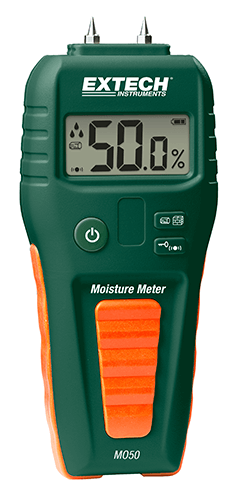The Science Behind Moisture Meters: How They Work and Why They're Essential
The Science Behind Moisture Meters: How They Work and Why They're Essential
Blog Article
Delve Into the Globe of Moisture Meters: Every Little Thing You Need to Know
In the realm of wetness meters exists a world of accuracy and practicality that usually goes unnoticed. Recognizing how moisture meters run, the different types readily available, and their diverse uses can lose light on their value in ensuring high quality and performance.
How Moisture Meters Work
Moisture meters run by gauging the electrical conductivity or capacitance of products to establish the moisture material existing. These meters are important devices throughout various industries, consisting of building and construction, agriculture, and woodworking. By utilizing different techniques such as pinless or pin-type modern technology, dampness meters provide accurate readings that assist experts make notified choices.
Pin-type dampness meters function by placing the sharp pins into the material being tested. On the various other hand, pinless dampness meters make use of electro-magnetic signals to scan a larger location without creating any kind of damage to the material's surface area.
No matter of the technique utilized, moisture meters play an essential role in preventing concerns such as mold development, structural damage, or item flaws brought on by excess wetness. Understanding just how these meters job is necessary for making certain the high quality and integrity of products in different applications.
Types of Moisture Meters
Offered the vital role dampness meters play in different sectors, it is important to comprehend the various types readily available to experts for accurately analyzing moisture degrees - Moisture Meter. There are mainly 2 main sorts of moisture meters: pinless and pin-type wetness meters

On the various other hand, pinless moisture meters use electro-magnetic sensor plates to scan a larger location of the material without triggering any damages. This type is appropriate for quickly scanning huge areas and is frequently used for floor covering, walls, and ceilings. Pinless meters are practical for taking analyses on finished surface areas without leaving any visible marks.
Both kinds of moisture meters have their benefits and are picked based on the certain requirements of the task handy. Understanding the distinctions in between these types is vital for professionals to make precise dampness assessments.
Applications Across Industries
Building professionals count on wetness meters to analyze the wetness degrees in building products like timber, drywall, and concrete, which is crucial for keeping structural honesty and stopping issues like rot or mold and mildew. The flooring market makes use of moisture meters to gauge the moisture material in subfloors prior to installing various floor treatments, avoiding costly damages due to excess wetness. In the food sector, moisture meters are utilized to monitor and manage moisture degrees in items such as grains, nuts, and dried fruits to preserve quality and quality.
Tips for Utilizing Wetness Meters
When determining the dampness web content in various article materials,Use the dampness meter's calibration setups to ensure accurate readings. Calibration is critical for the correct functioning of a moisture meter. Before each use, it is a good idea to examine and readjust the calibration setups according to the specific material being evaluated. Furthermore, see to it the meter is readied to the right dampness array for the product you are gauging to get one of the most precise results.
When utilizing a pin-type moisture meter, insert the pins to the ideal deepness suggested for the material being tested. This ensures that the dampness analyses are drawn from the appropriate depth within the product, supplying a much more accurate depiction of its dampness material. For pinless moisture meters, bear in mind to keep appropriate contact with the product's surface to get reliable analyses.
Frequently examine and change the batteries in your wetness meter to stop unreliable readings as a result of low power. When not in usage to prolong its life expectancy and keep its accuracy, Shop the meter in a safe and dry location. By following these suggestions, you can make the most of the efficiency of your dampness meter and obtain exact dampness content dimensions throughout different materials.
Upkeep and Calibration
To make certain the accuracy of moisture web content dimensions, routine maintenance and wikipedia reference calibration of the moisture meter are essential steps in its proper functioning. Calibration changes the wetness meter to guarantee that it offers constant and trustworthy results.
Calibration needs to be done periodically, specifically if the wetness meter is used regularly or in vital applications where precise dimensions are required. By calibrating the dampness and preserving meter routinely, customers can rely on the accuracy of the wetness content dimensions gotten.
Final Thought

To conclude, wetness meters play a crucial function in numerous industries by precisely measuring the wetness he said content of products. Understanding how these tools work, the different kinds available, and appropriate upkeep and calibration are essential for acquiring trusted results. Whether in production, building and construction, or agriculture, using wetness meters assists make sure quality assurance and performance in procedures.

In conclusion, dampness meters play a crucial duty in numerous markets by precisely determining the moisture content of products.
Report this page